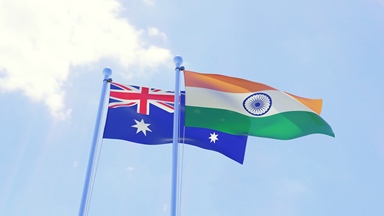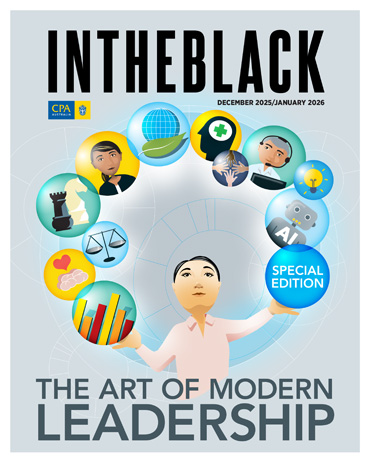Loading component...
At a glance
Economic ties between Australia and India were strengthened in December 2022 with the implementation of a landmark free trade agreement that cut tariffs and delivered new market access opportunities for both nations.
The Australia-India Economic Cooperation and Trade Agreement (ECTA) is a key initiative that builds toward a broader Australia-India Comprehensive Economic Cooperation Agreement. The agreement provides new opportunities for trade and investment, but business leaders still face the task of leveraging its full potential.
This was the focus of two engaging sessions at the ECTA unleashed: India and Australia in action business conference in Sydney, hosted by CPA Australia and the Australian (Sydney) chapter of The Institute of Chartered Accountants India.
In a panel discussion, senior executives shared first-hand experience of conducting business along this valuable trade line, while a presentation explored how businesses can navigate the complexities of cross-border investment and seize new opportunities.
A game-changing agreement
Moderated by Jodi McKay, director of the Australia-India CEO Forum, the panel discussion highlighted the extraordinary growth in Australia-India ties since ECTA. In the 2025 financial year, two-way trade was valued at A$37.26 billion, and India was Australia’s eighth largest trading partner.
“The free trade agreement acknowledges the potential of reaching A$100 billion two-way trade by 2030,” McKay said.
“It is tough going because Australia wants greater access to India’s agriculture and India wants greater mobility to Australia. Those are two very contentious issues for both countries.”
McKay was joined on the panel by Ankit Taneja, country general manager at Mahindra Automotive Australia, who said ECTA was a game changer for the business.
“While we have been in [the Australian] market for the last 20 years, our scale up has happened since 2022 — which coincided with ECTA — when we were able to launch our new SUVs in the Australian market,” he said. “We were able to directly pass on the benefit of the import duties to the consumer.”
Panel member Srini Vasan FCPA, CEO and director of Sentinel Business Consulting, discussed ECTA’s impact on the jewellery market with the elimination of the 5 per cent tariff on diamonds. A former CEO and director of The Jewellery Group brands Zamels and Mazzucchelli’s, he noted that recent US tariffs may accelerate India’s two-way trade with Australia.
“The [US] jewellery and diamond market is about US$30 billion (A$46.35 billion) from India, and we think that it’ll come down by about 30 per cent in 2026,” he said. “That’s how significant the fall will be for the Indian exports there. But, having said that, it has opened a lot of opportunities in Australia.”
Enhanced collaboration
While digital trade and investment are outside the scope of ECTA, panel member Swapan Johri, president of growth markets at HCLTech, highlighted the removal of double taxation for Indian firms providing technical services to Australia, as well as the enhanced sense of collaboration under ECTA.
“Clients talk a little more around ‘How can we do this program planning together?’ rather than saying, ‘Hey, here are the five things that I want you to deliver, get 10 people and deliver it’,” said Johri, who added that the double taxation removal has enhanced the company’s ability to price, cost and reinvest.
Johri also noted that there is more to be done to “really bear the fruits of this partnership”.
“There’s certainly a lot more [to be done] on the education, awareness and acceptance front,” he said. “Of the A$100 billion-plus IT market in Australia, no more than 5 per cent is done by Indian IT companies, but they are a global powerhouse when it comes to technology and knowledge of IT services.”
Vasan suggests that Australian businesses seeking to explore opportunities in India are wise to seek local advice.
“You have to have the right advisers or partners, without whom you can’t just chip into the India market. It is an absolute necessity, because you have the regulations to navigate.”
Opportunity awaits
The panel discussion was followed by a presentation on how to make the most of the Australia-India partnership. Sathyaraj C.M., general manager at India’s International Financial Services Centres Authority, explained how economic reforms in India have enabled it to “plug into the global financial system”.
He outlined the evolution of Gujarat International Finance Tec-City, India’s first international financial services centre, and the opportunities it presents for Australian professionals in areas such as bookkeeping, accounting, taxation and financial crime compliance services regulation.
This new, planned city has favourable policies and incentives from the Indian government to encourage business and FinTech development, including a few tax benefits.
“These four activities have been marked as standalone financial services,” he explained.
“That means you can undertake these activities sitting in GIFT City. The structure can be in the form of a company or limited liability partnership. It must have one principal officer and compliance officer, and you can undertake the operations in 15 specific foreign currencies.
“I would like to emphasise that professional services are not just support functions,” he added. “They are enablers of trust, integrity and growth.”
Michael Helleman, head of Asia – Investment at the Australian Trade and Investment Commission (Austrade), discussed how the government agency helps businesses navigate the complexities of cross-border investment and seize new opportunities by building connections and providing regulatory advice.
“One of the key points of difference that I think will underpin more outward-bound investment from Australia into India is our pools of capital under management, particularly through our compulsory superannuation programs, which are huge by global standards and outsized in comparison to the overall size of our economy,” he said.
Higher investment on the horizon
India is one of the world’s fastest growing major economies, and Hellemen said a surge in Indian investment into Australia was “entirely possible” over the next 20 years. Austrade’s investment promotion program includes two pillars aligned with the Federal Government’s core economic priorities.
“The first is net zero, which reflects the government’s commitment to decarbonise the Australian economy,” he said. “The second pillar is what the government calls economic security, which is largely based on building sovereign capability within the Australian economy.”
Helleman emphasised that supporting outbound investment by Australian companies is “just as important as working with Indian firms coming to Australia”.
“In terms of investment in both directions, I think we are early in the journey in both countries,” he said.
“It is important to recognise that we already have pretty sophisticated flows in both directions, but there is opportunity to do much more.”

